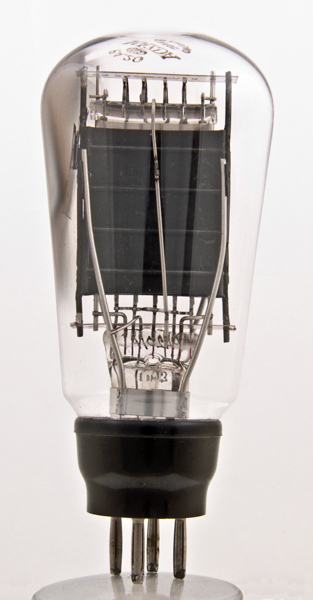
|
The PA20 is a two volt filament version of the PP3/250 triode, the Mazda valve of the PX4 class.The initial production ran with 250 V on the anode and had a load of 2,200 Ω and produces 2.75 W. In 1939 a revised version was produced that ran with 300 Volts on the anode. The load was then 3,000 Ω and the cathode resistor was 750 Ω, this gave a 4.2 W output.The anode load is quoted as 3,000 Ohms and the output as a single ended Class A amplifier is 4.2 Watts at 5% distortion. The cathode resistor should be 750 Ohms to generate the grid bias.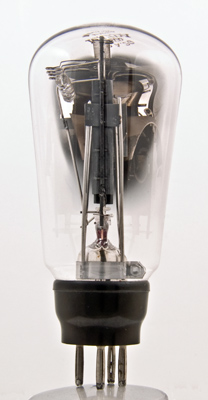
The anode is much wider than the front to back dimension and the supports are stout rods that fix to a clamp around the pinch. This is a hand assembly operation.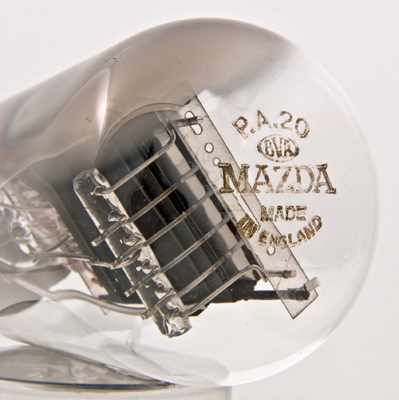
The filament tension springs are attached to a glass rod at the side of the carbonised anode.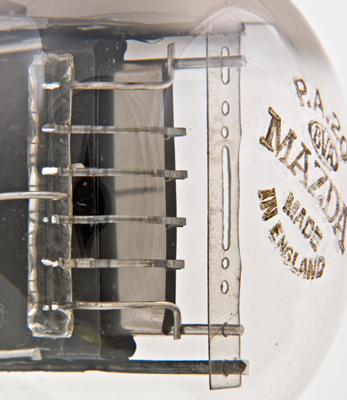
The the glass rod is held in place by rods welded to the main anode supports. The tops of the four inverted V filament strands can just be seen.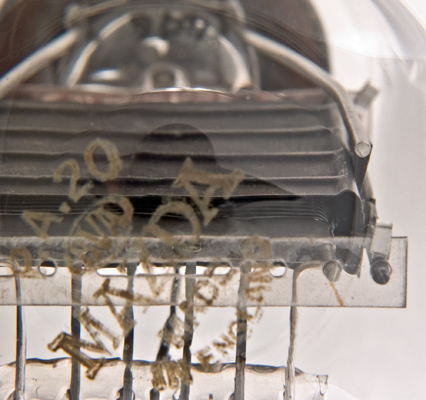
Looking down on the anode the grid wires can just be seen. The writing is etched into the glass and includes the BVA logo.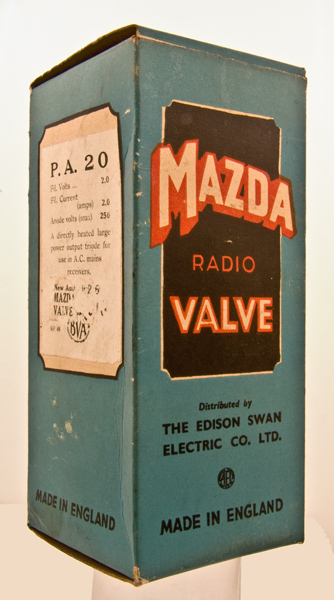
The original box. Inside is a formed cardboard support.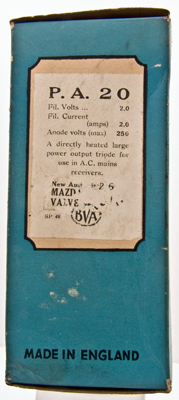
A was typical of the time, the box carries the basic operating conditions of the valve.The balloon envelope is 58 mm in diameter, and excluding the B4 base pins is 118 mm tall.References: Data-sheet & 1043. Type PA20 was first introduced in 1936. See also 1936 adverts. |
Pin Connections
| 1 | 2 | 3 | 4 |  a | g1 | f | f |
|
|
Absolute Maximum Operating Conditions¶
| Vh | Ah | Va | Vg | mAa | ra | gm | 
| 2.0 | 2.0 | 250 | -27.5 | 50 | 1,000 | 6.5 |
|
Absolute Maximum Operating Conditions¶
| Vh | Ah | Va | Vg | mAa | ra | gm | 
| 2.0 | 2.0 | 300 | -36 | 48 | 1,100 | 5.2 |
|
Updated December12, 2024.
|
|